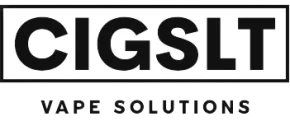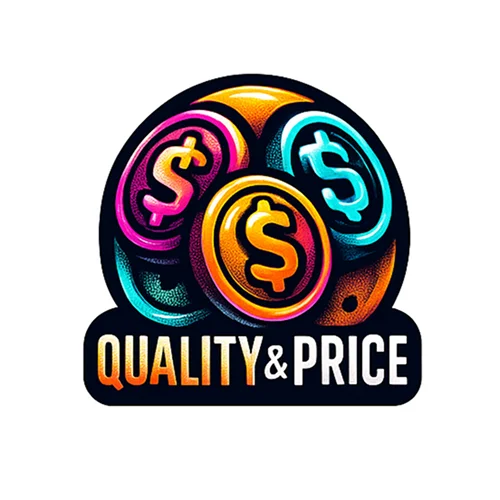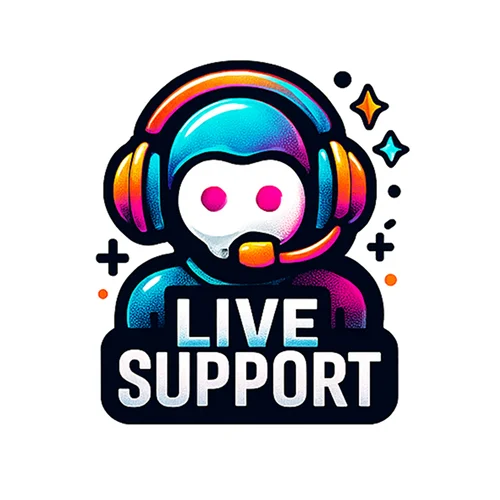In recent years, the prevalence of vaping has surged, becoming a significant public health topic and a focal point for regulatory bodies worldwide. As the industry continues to evolve, ensuring compliance with regional regulations has emerged as a critical concern for manufacturers, retailers, and consumers alike. “Ensuring Vaping Compliance: A Regional Guide” provides a comprehensive overview of the diverse legal landscapes governing vaping products across different jurisdictions. This article aims to equip stakeholders with the necessary knowledge to navigate the complexities of regional regulations, highlighting key compliance requirements and offering practical insights into maintaining adherence. By fostering a deeper understanding of these regulatory frameworks, the guide seeks to promote responsible practices within the vaping industry, balancing innovation with public health considerations.
Table of Contents
- Understanding Regional Regulations and Policies
- Key Compliance Challenges and How to Address Them
- Best Practices for Monitoring and Enforcement
- Effective Strategies for Collaboration with Local Authorities
- Resources and Tools for Staying Up-to-Date with Legal Changes
- Q&A
- Closing Remarks

Understanding Regional Regulations and Policies
Each region has its own set of rules governing vaping, making it crucial for businesses and consumers to stay informed to ensure compliance. The vaping landscape is shaped by laws designed to protect public health, which can vary widely from one area to another. It’s essential to familiarize yourself with the specifics of local policies, which might include restrictions on sales to minors, advertising limitations, or specifications on product labeling. Some regions also impose taxes or fees on vaping products, which can impact pricing and market strategy. Recognizing these nuances facilitates smoother operations and keeps businesses clear of potential legal repercussions.
Understanding and adhering to regional policies requires due diligence. Here are some common regulatory aspects to consider:
- Age Restrictions: Ensure you know the legal age for purchasing vaping products in your area.
- Flavor Bans: Check if there are bans or restrictions on specific flavors.
- Product Testing: Some regions require rigorous testing and quality assurance measures.
- Special Taxes: Be aware of any additional taxes that might apply to vaping products.
| Region | Legal Age | Flavor Ban | Special Tax |
|---|---|---|---|
| California | 21 | Yes | 15% |
| Texas | 21 | No | 10% |
| Florida | 18 | No | 12% |

Key Compliance Challenges and How to Address Them
As regulations on vaping products continue to evolve, businesses face several significant compliance challenges. Understanding regional regulations is paramount, as each jurisdiction may have its own set of rules concerning advertising restrictions, flavor bans, and product labeling. Companies must stay informed about legislation changes to avoid penalties and ensure their products can legally reach the market. Moreover, age verification remains a critical issue, with stricter mandates often implemented to prevent underage sales. To ensure compliance, businesses can invest in robust age verification systems and engage legal experts to help navigate the often complex landscape of regional legislation.
Another critical challenge is maintaining product quality and safety standards as mandated by regulatory bodies across different regions. This involves establishing rigorous quality control protocols and keeping comprehensive records of production processes and testing results. Training staff on compliance requirements and establishing a company culture centered on safety and adherence can significantly reduce risk. Additionally, being proactive with stakeholders by setting up committees or teams dedicated to monitoring regulatory trends and advocating for favorable changes can also be impactful.
| Challenge | Solution |
|---|---|
| Advertising Restrictions | Stay updated on regional laws and adjust marketing strategies accordingly. |
| Flavor Bans | Develop alternative products that comply with current regulations. |
| Age Verification | Implement sophisticated software to ensure purchases by minors are prevented. |
| Product Quality | Adopt industry-wide best practices for thorough testing and documentation. |
Best Practices for Monitoring and Enforcement
To effectively manage vaping compliance in your region, it’s crucial to establish a robust monitoring framework. Begin by implementing a structured inspection routine that targets different levels of the supply chain, from manufacturers to retail stores. This ensures that all operations comply with local laws and regulations. Consider integrating technology-driven solutions like IoT devices and AI-powered analytics to efficiently track product distribution and sales data in real-time. Encouraging self-reporting from businesses can also enhance transparency and accountability. Make use of unannounced inspections to prevent non-compliance and foster a culture of responsibility. Additionally, engaging with community stakeholders through educational workshops can boost public awareness and reinforce regulatory objectives.
Enforcement strategies play a pivotal role in maintaining compliance. Implement a tiered penalty system where violators face penalties proportionate to the severity of their non-compliance. This not only deters potential breaches but also ensures fair treatment. Use the following table to guide administrative actions:
| Violation | Action |
|---|---|
| Minor (e.g., labeling issues) | Warning and corrective notice |
| Moderate (e.g., expired product sales) | Fine and temporary suspension |
| Severe (e.g., sale to minors) | License revocation and substantial fine |
Regular audits should follow enforcement actions to verify compliance improvements. Engage with local law enforcement and regulatory bodies to facilitate information sharing and synchronize efforts, ultimately creating a unified approach towards ensuring compliance.
Effective Strategies for Collaboration with Local Authorities
To successfully navigate the complex landscape of vaping regulations, engaging local authorities in a collaborative manner is essential. Building respectful relationships with regional officials begins with open communication. Introducing your organization’s mission and objectives in combating non-compliance can foster trust. Timely updates on your efforts and policy implementations help keep stakeholders informed. Collaboration also benefits from understanding local challenges—hosting joint awareness campaigns or training sessions can serve as a bridge connecting various entities and advancing mutual goals. Establishing dedicated liaison officers within your organization can provide a singular point of contact, ensuring smoother exchanges and faster resolution of potential issues.
Leveraging resources and expertise is another cornerstone of effective collaboration. Combining efforts allows for optimized use of available resources and the amplification of impact. Regional authorities often possess insights valuable for tailoring compliance solutions that suit local demographics and conditions. Consider forming task forces or working groups that bring together representatives from both your organization and local officials. These teams can focus on specific regulatory challenges and develop cohesive strategies. To track progress and share results, utilize clearly defined metrics which might include:
| Metric | Description |
|---|---|
| Compliance Rate | Percentage of retailers adhering to vaping laws |
| Inspection Frequency | Number of inspections conducted quarterly |
| Public Awareness | Measured by community engagement in campaigns |
Resources and Tools for Staying Up-to-Date with Legal Changes
Staying informed about legal changes in the vaping industry is crucial for compliance, particularly given the patchwork of regulations that can vary significantly from one region to another. A variety of resources and tools can help keep you updated, ensuring that you remain in good standing with the law. For starters, subscription-based services such as Westlaw and LexisNexis offer comprehensive legal databases that give you access to the latest statutes and case law pertaining to vaping. Additionally, free resources like the websites of local and regional regulatory bodies can offer invaluable insights. Make sure to also subscribe to newsletters or updates from authoritative law firms that specialize in cannabis and vaping law.
Utilizing specific online tools can also streamline the process of staying compliant. For instance, setting up Google Alerts with keywords like “vaping legislation” combined with your specific region can provide real-time updates directly to your inbox. Apps designed for regulatory monitoring can also prove invaluable; ComplyAdvantage and RegTech solutions can notify you of legal changes as soon as they happen. Many of these tools offer customizable notifications, ensuring you get only the most relevant updates. To make the most of these resources, regularly allocate time to review both emerging laws and any updates to existing regulations.
Q&A
Q&A: Ensuring Vaping Compliance: A Regional Guide
Q1: What is the primary focus of the article “Ensuring Vaping Compliance: A Regional Guide”?
A1: The article primarily focuses on providing guidance and insights to businesses and individuals involved in the vaping industry, outlining the regulatory frameworks they need to adhere to in different regions. It emphasizes understanding local laws, selling practices, labeling requirements, and advertising restrictions to ensure compliance.
Q2: Why is compliance important in the vaping industry?
A2: Compliance is crucial in the vaping industry to ensure consumer safety, maintain public health standards, and avoid legal penalties. Adhering to regulations helps manufacturers and retailers maintain credibility and trust with consumers and regulatory bodies, minimizing the risk of fines and business disruptions.
Q3: How do vaping regulations vary by region, and what are some common regulatory themes?
A3: Vaping regulations can vary significantly by region, with differences in age restrictions, product labeling, advertising permissions, and taxation policies. However, common regulatory themes include restrictions on selling to minors, mandatory health warnings on packaging, limitations on nicotine content, and guidelines for product ingredients and manufacturing processes.
Q4: What are some challenges businesses face in maintaining vaping compliance?
A4: Some challenges include staying updated with rapidly changing regulations, managing cross-border compliance for international operations, ensuring supply chains meet legal standards, and adapting marketing strategies to align with legal restrictions. Businesses must also train staff adequately to handle compliance issues effectively.
Q5: Does the article suggest any strategies for managing compliance effectively?
A5: Yes, the article suggests several strategies for managing compliance, such as conducting regular regulatory audits, engaging with legal experts to understand local laws, implementing comprehensive staff training programs, and utilizing technology for compliance tracking and reporting. Collaboration with industry associations for updates and support is also recommended.
Q6: What role do governmental and non-governmental organizations play in vaping compliance?
A6: Governmental organizations are responsible for establishing and enforcing vaping regulations, conducting inspections, and imposing penalties for non-compliance. Non-governmental organizations, including industry associations and advocacy groups, often provide support and resources to help businesses understand and comply with regulations, and sometimes engage in lobbying for policy changes.
Q7: How can consumers contribute to vaping compliance?
A7: Consumers can contribute by purchasing products only from reputable sources, reporting any non-compliance issues they notice to authorities, and staying informed about the regulations that affect product safety and quality. Their feedback can also influence companies to prioritize compliance and adopt improved standards.
Q8: What are the potential consequences of non-compliance in the vaping industry?
A8: Potential consequences of non-compliance include legal penalties such as fines, product seizures, and business closures. It can also lead to reputational damage, loss of consumer trust, decreased sales, and increased scrutiny from regulators. In severe cases, it might result in civil lawsuits or criminal charges.
Closing Remarks
ensuring vaping compliance across various regions requires a robust understanding of local regulations, diligent monitoring systems, and collaborative efforts among stakeholders. While the landscape of vaping laws continues to evolve, staying informed and proactive is essential for businesses, health professionals, and policymakers alike. By fostering transparency and prioritizing public health, regions can navigate the complexities of vaping regulations more effectively, ultimately contributing to a safer and more regulated industry. As the conversation around vaping continues to develop, ongoing education and dialog will be crucial in achieving a balanced approach that respects both public welfare and individual freedoms.














